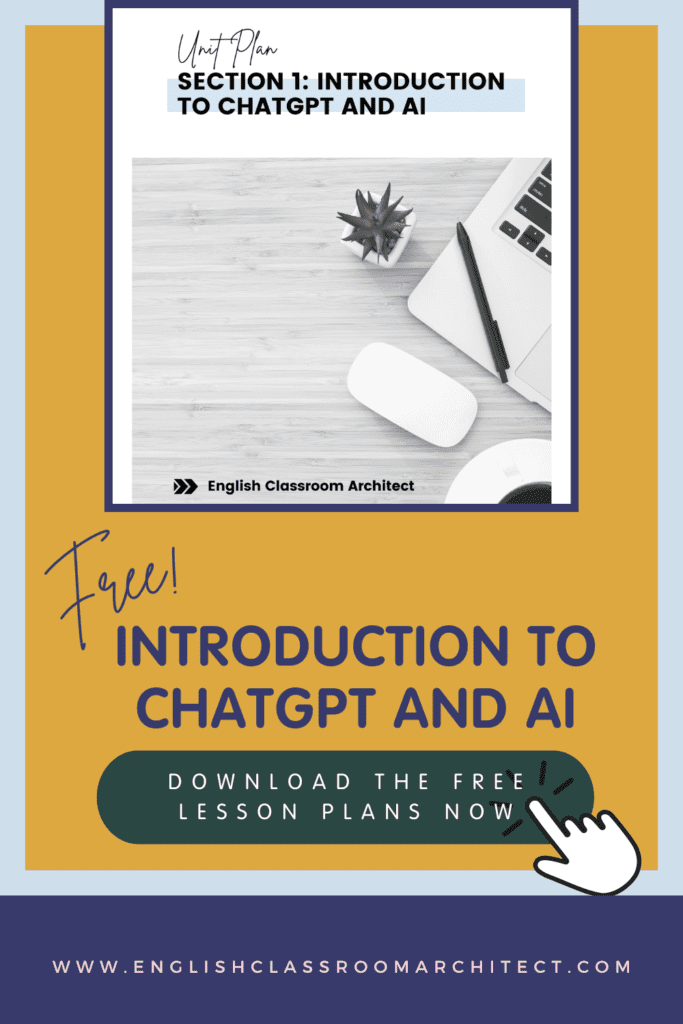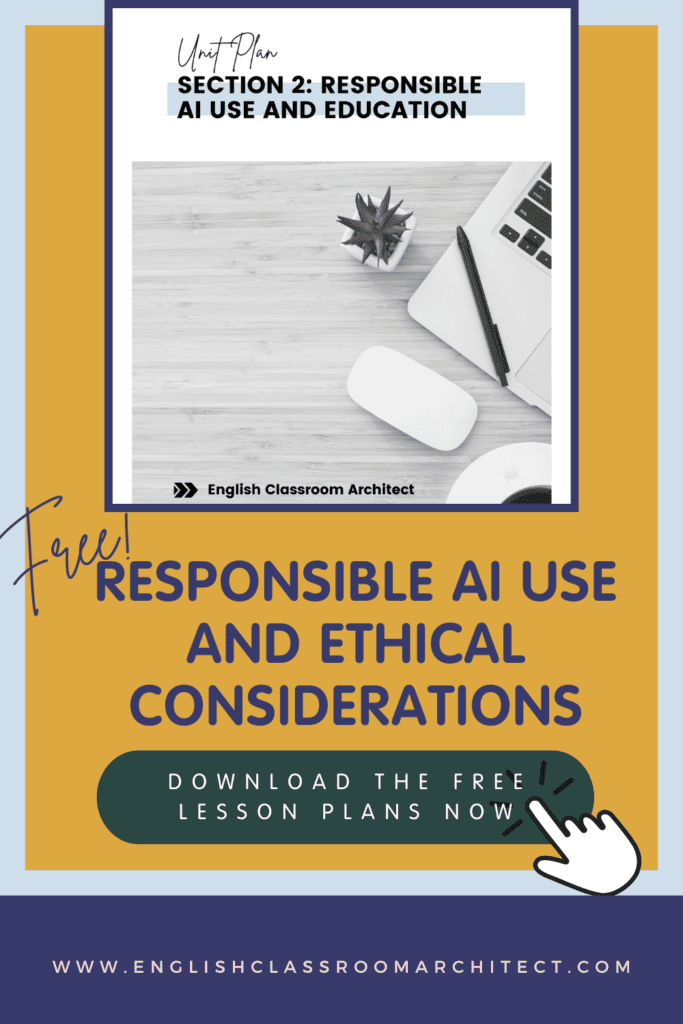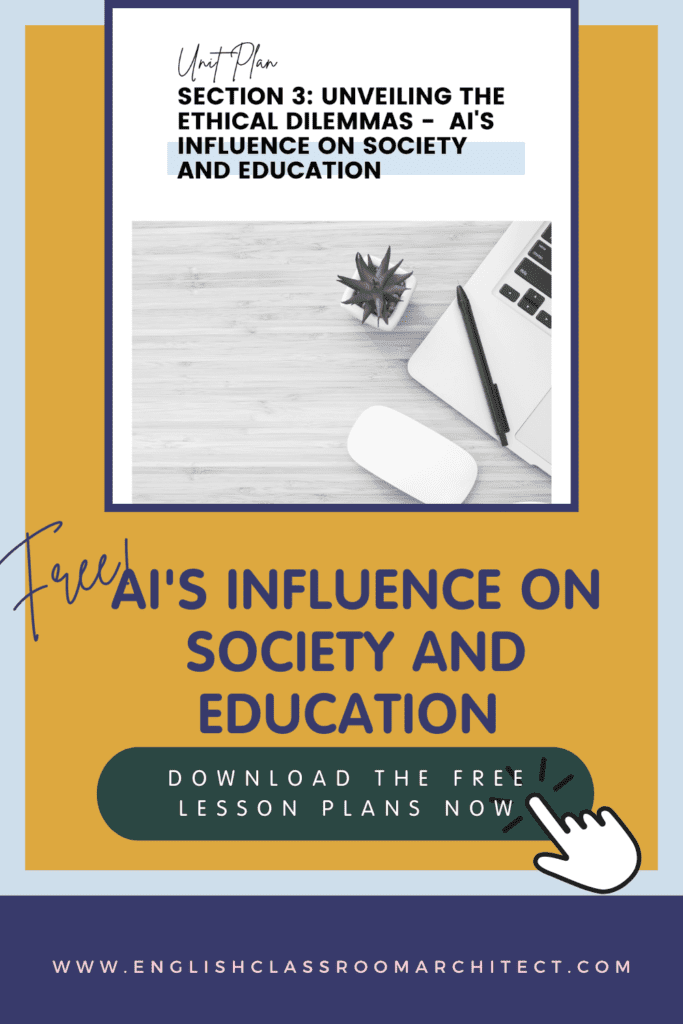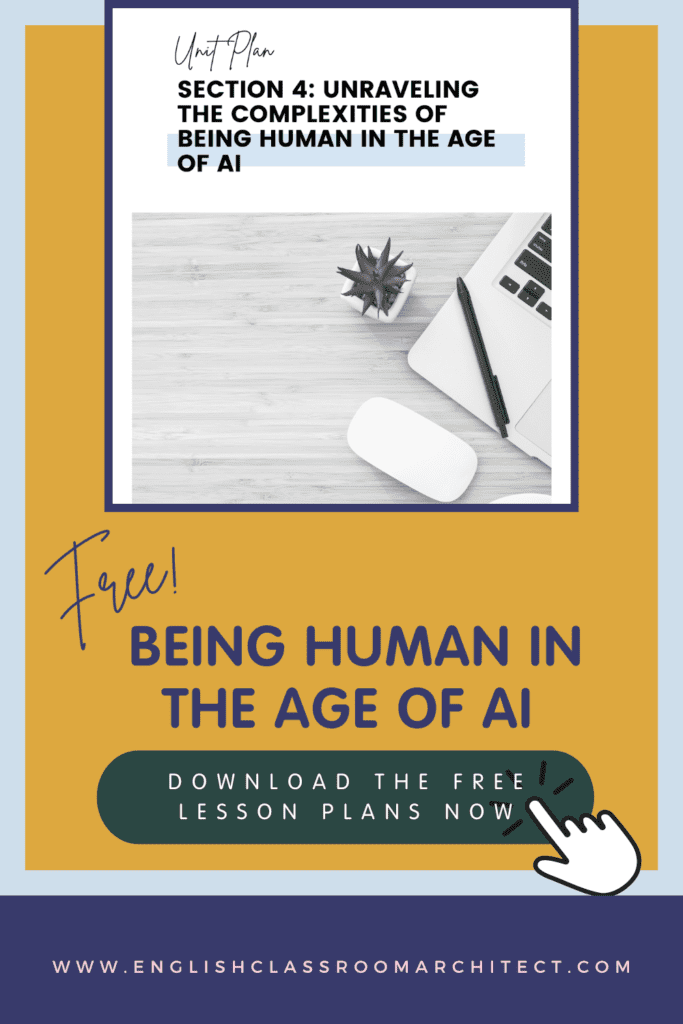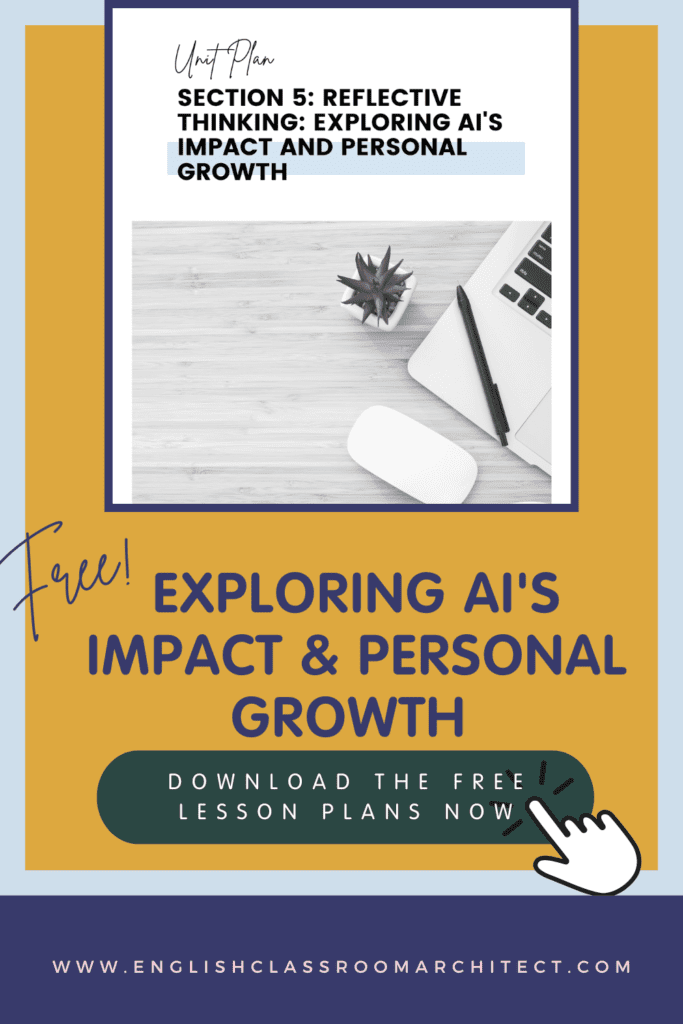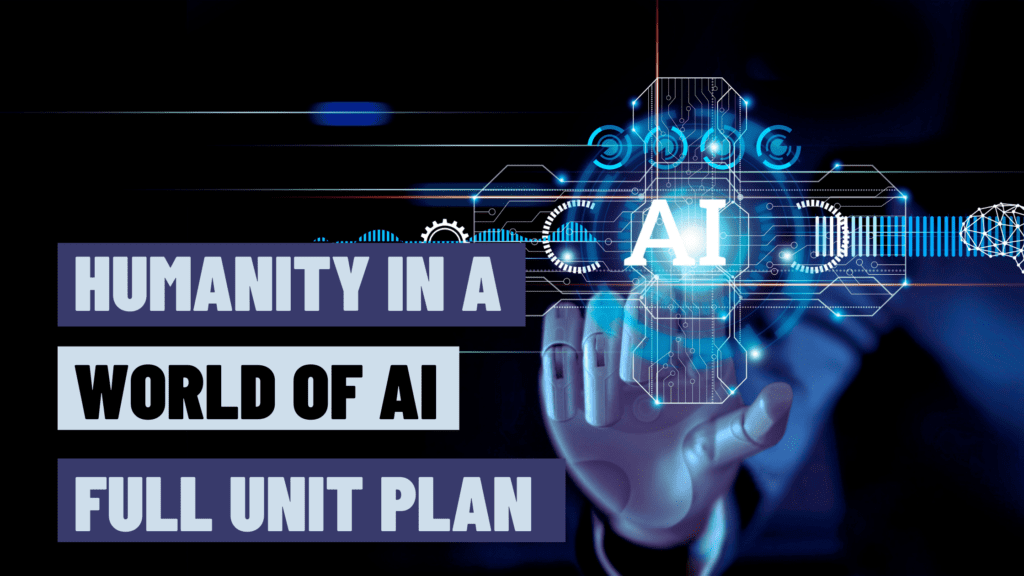
We need to think about ChatGPT in the classroom now that students are easily able to interface with artificial intelligence. Last school year, Open AI released ChatGPT, the artificial intelligence language model developed by OpenAI. While artificial intelligence is not new, the power to directly interface with artificial intelligence in natural language conversations on a wide range of queries and prompts is. The GPT technology has the potential to revolutionize many industries, including education.
The Rise of AI in Education
Some of my students (maybe yours, too!) realized that ChatGPT was able to generate essays and responses within seconds. As a result, what I came to realize is that ChatGPT will also confidently make up answers. I found this to be true because I had a handful of students turn in essays for their essay on The Water Dancer that had completely made up quotes, which is a problem I had not encountered before. While this was frustrating on many levels, it led me to better understand the field of artificial intelligence and the impact it will have on our students. The emergence of ChatGPT in the classroom has the potential to be a hindrance and also lead to exciting possibilities.
I have been thinking about and researching artificial intelligence quite a bit, and in an interesting feedback loop and demonstration of how AI is already shaping our lives, my Google and YouTube Discover feeds are filled with information about the impact, promises, and potential consequences of artificial intelligence.
ChatGPT and Generative AI: AI’s Potential to Revolutionize the Classroom
So, here’s the thing. I may be overdramatizing when I say it, but I think we as educators are at a critical moment. We have the choice to embrace technology and shape our students’ perceptions and interactions or we can ignore the importance AI has and will increasingly have in their worlds.
I heard from many teachers at the end of the year, frustrated by student use of AI and the additional time teachers were spending checking students for plagiarism of AI. Now, in this moment where ChatGPT, Google Bard and others are in their infancy stages, we also have some control on how we react to the use of AI and we can create systems that do not lead to increased work on our part.
English Teachers and AI: Leveraging Human Guidance Alongside AI
With its ability to understand and generate human-like text, ChatGPT and other generative AI models can become an invaluable tool for educators and learners. They can facilitate deep discussions, provide alternative perspectives, and encourage critical thinking. By interacting with ChatGPT in the classroom and under our guidance, students can enhance their communication skills, broaden their knowledge, and explore innovative ideas.
However, as my students so aptly demonstrated last year, it is important to acknowledge the limitations of ChatGPT. While it can provide impressive responses, it is not a substitute for human interaction, expertise, or nuanced understanding. ChatGPT may sometimes generate incorrect or incomplete information, and it can inadvertently exhibit biases present in its training data. These limitations highlight the significance of human guidance and critical thinking when engaging with AI technologies like ChatGPT.

I created this unit to give educators some ideas for how to discuss the use of AI with their students – both practically by giving students parameters for acceptable and ethical use in the classroom, and also more broadly by discussing the role AI will have on education and the workforce. I’ve also created a guide for high school English teachers, as we are the discipline that may be the most impacted by generative AI and ChatGPT in the classroom, at least initially.
As I spent time learning about the effect AI is having on various industries, I thought more and more about the lessons embedded in media and literature and how English teachers are also uniquely positioned to have deep and important conversations about mindset around artificial intelligence and the opportunities for what we value as educators – creativity and critical thinking, as well as skills like fact checking, questioning, and analysis.
This unit aims to explore the implications and complexities of artificial intelligence in our lives. By engaging with ChatGPT and examining its capabilities, we will encourage students to reflect on the opportunities and challenges presented by AI. It serves as a starting point for fostering discussions around the role of AI in education, society, and the ethical considerations that arise as we navigate this rapidly evolving technological landscape. Through the use of poems, podcasts, television episodes and articles, the goal is to empower students to become discerning users of AI technologies, capable of leveraging their strengths while also recognizing their limitations.
Table of Contents
Unit Introduction
Through this exploration, we can foster a sense of agency, creativity, and ethical responsibility, ensuring that AI technologies like ChatGPT become valuable tools in the pursuit of knowledge and understanding. Using a variety of activities, discussions, and multimedia resources, we will encourage students to reflect on the opportunities and challenges presented by AI and its impact on education, society, and the workforce.
Literary works, media, and real-world examples will be used to explore AI’s representation and implications, encouraging students to think beyond the technology itself and consider its broader societal impact. Students will explore themes such as creativity, independent thinking, and diversity of perspectives, and how these values align with the use of AI in education.
By the end of the unit, students will have developed the skills and knowledge necessary to navigate the complexities of AI responsibly. They will understand the benefits and limitations of AI tools like ChatGPT in the classroom and outside of it and be equipped to critically evaluate and utilize AI-generated content effectively. Empowered with a strong ethical framework, students will be prepared to engage with AI technologies in a way that aligns with their values, promotes responsible use, and contributes to their personal and academic growth.

Unit Objectives
- Develop critical thinking skills in analyzing AI-generated content and recognizing its limitations.
- Foster ethical and responsible use of AI technologies, including guidelines for acceptable use for generative AI like ChatGPT in the classroom.
- Explore the potential benefits and risks of AI, considering diverse perspectives and contrasting viewpoints.
- Examine the impact of AI on education and the evolving role of educators in shaping students’ perceptions and interactions with technology.
- Empower students to become discerning users of AI technologies, capable of leveraging their strengths while understanding their limitations.
- Promote creativity, independent thinking, and diversity of perspectives in the context of AI and education.
Unit Structure
Section 1 – Introduction to ChatGPT and AI
- Provide an overview of ChatGPT and its capabilities as an AI language model.
- Discuss the emergence and significance of AI in various industries, including education.
- Explore the promises and potential consequences of AI, setting the stage for deeper discussions.
- Introduce policies around generative AI like ChatGPT in the classroom.
Click to access the resources for this section!
Section 2 – Responsible AI Use and Ethical Considerations
- Investigate how AI is transforming the education landscape and the role of educators.
- Discuss potential career opportunities and challenges arising from AI integration in the workforce.
- Examine the skills and mindsets necessary to thrive in an AI-driven world.
- Engage students in discussions and activities that foster ethical responsibility in their AI use.
Click to access the resources for this section!
Section 3 – Unveiling the Ethical Dilemmas: AI’s Influence on Society and Education
- Explore literary works, poems, television episodes, or other media that address AI-related themes.
- Analyze how AI is portrayed in these works and discuss the potential implications on society and education.
- Encourage students to reflect on the lessons embedded in literature and media concerning AI’s impact on creativity, critical thinking, and diverse perspectives.
- Consider the importance of maintaining space for reflection, vulnerability, and genuine human connection in the face of technological distractions
- Discuss the ethics of ChatGPT in the classroom.
- Explore the concepts of control, autonomy, and dependency and their relation to the growing influence of AI systems and algorithms in various aspects of our lives.
Click to access the resources for this section!
Section 4 – Unraveling the Complexities of Being Human in the Age of AI
- Establish guidelines and parameters for the responsible use of AI in the classroom.
- Discuss the importance of avoiding plagiarism, understanding AI limitations, and critical thinking when interacting with AI technologies.
- Address the biases and ethical concerns that may arise with AI models like ChatGPT.
- Engage students in hands-on activities where they interact directly with ChatGPT in the classroom.
- Encourage them to generate responses, critically analyze outputs, and compare them to human-generated content.
- Foster discussions on the strengths and limitations of ChatGPT (in the classroom and in the world), the role of human guidance, and the importance of critical thinking when utilizing AI tools.
Click to access the resources for this section!
Section 5 – Reflective Thinking: Exploring AI’s Impact and Personal Growth
- Provide opportunities for students to reflect on their personal beliefs, values, and concerns regarding AI in general, as well as ChatGPT in the classroom, specifically.
- Engage in creative activities such as writing assignments, debates, or multimedia projects that allow students to express their understanding and perspectives on AI-related topics.
Click to access the resources for this section!
Natural Opportunities for Next Units
- Frankenstein – continue conversations about what it means to be human, the importance of empathy, and the responsibility of the creator (and user) as new technologies emerge.
- Fahrenheit 451 – a unit on Fahrenheit unit could look at the dangers of conformity and the power of individuality. Of special interest could be a focus on how the dystopian future of Fahrenheit 451 came about: initially the small actions of people, not the controlling actions of the government. Also focusing on the dangers of complacency and the importance of self-reliance and individual thought could allow for continued and looped conversations.
- Transcendentalism – a unit about Transcendentalism allows students to continue thinking about the role AI plays and will play in their future life while thinking about how this aligns or is misaligned with traditional American thinking.
- Explore using AI to support writing instruction. Check out Annotated ELA’s strategies for teaching narrative writing with ChatGPT.

